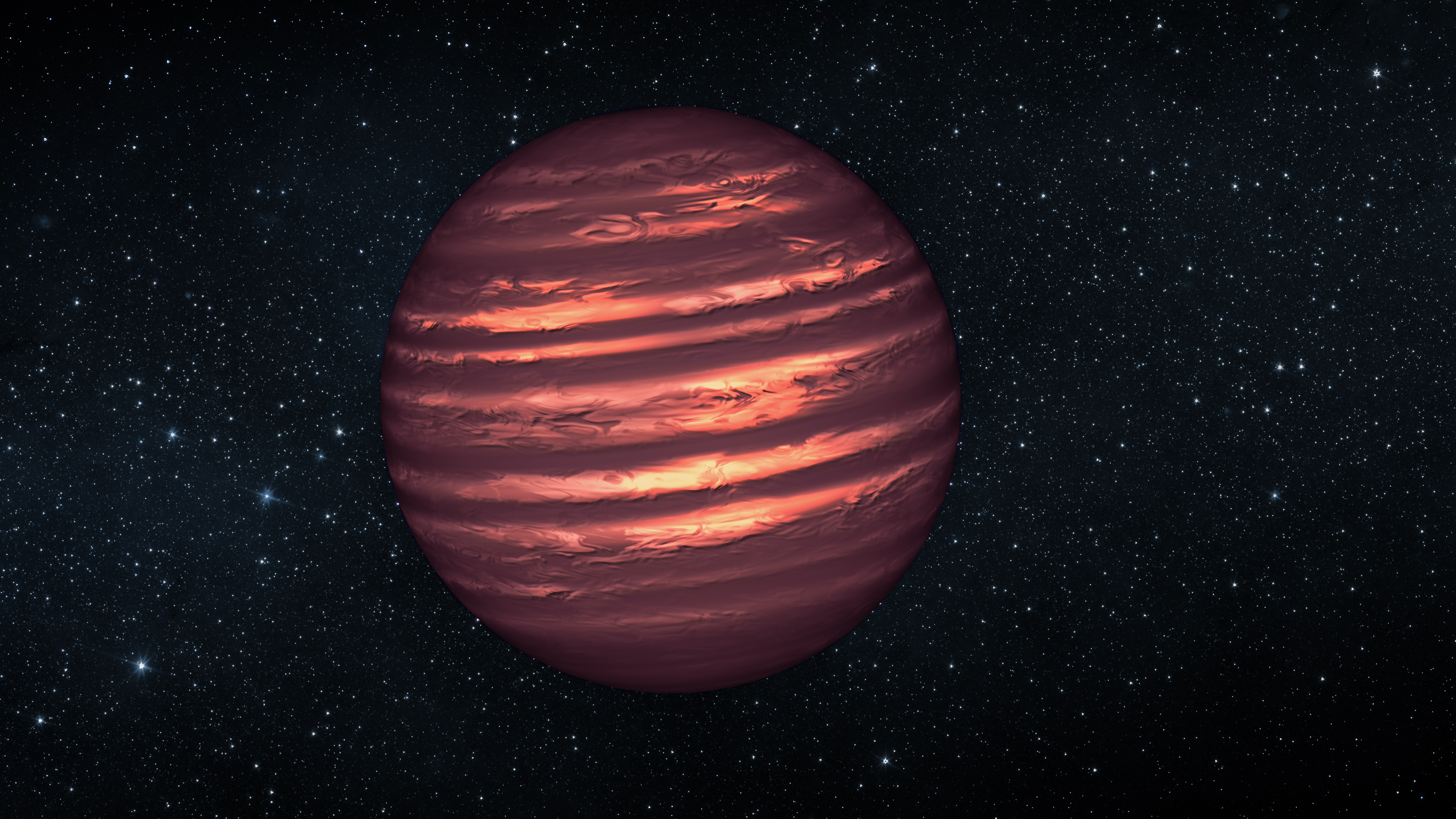
Astronomers now have a way to figure out how gas-giant planets form, thanks to a discovery by the James Webb Space Telescope (JWST) of ammonia "isotopologues," which are molecules that contain the same elements but with differing numbers of neutrons.
The nucleus of an atom is made from a bunch of protons and neutrons, and while the number of protons within an element does not change — for example, carbon atoms always contain six protons and nitrogen atoms always have seven protons — the number of neutrons can vary. When such variation occurs, an atom turns into an isotope. When isotopes are part of a larger molecule, we call them isotopologues.
For instance, the carbon-12 (12C) isotope contains six protons and six neutrons, but the carbon-13 (13C) isotope is heavier, with six protons and seven neutrons. This ratio of 12C to 13C is commonly used to infer details about the history of planetary systems, because the different isotopes have slightly different properties and different origins.
Related: James Webb Space Telescope's 'shocking' discovery may hint at hidden exomoon around 'failed star'
While many different isotopes have been detected in the atmospheres of the planets of the solar system, the great distances to exoplanets means that, until now, the only isotopes that have been detectable in exoplanetary atmospheres have been 12C and 13C.
Now, however, that is changing thanks to the JWST and a team led by astronomers David Barrado, Paul Mollière and Polychronis Patapis of the Centro de Astrobiología in Madrid.
They used the JWST's Mid-Infrared Instrument (MIRI) to detect ammonia isotopologues in the atmosphere of the cold brown dwarf known as WISE-J1828, which is located 32.5 light-years away in the direction of the summer constellation of Lyra, the Lyre. The brown dwarf is so cool that is has an estimated temperature of just 100 degrees Celsius (212 degrees Fahrenheit)
To be clear, a brown dwarf isn't technically a planet; it's a "failed star," or an object not quite massive enough to ignite nuclear fusion reactions of hydrogen within its core. However, brown dwarfs are a good proxy for some giant planets.
MIRI's spectrum of WISE-J1828 found water vapor, methane and ammonia. All three are staples of gas giant and brown dwarf atmospheres, but what was unusual here was a kink in spectral lines that indicated two different isotopologues of ammonia. Ammonia is a molecule made from one atom of nitrogen and three hydrogen atoms, hence it has the chemical formula NH3. In one isotopologue the nitrogen atom contained within the ammonia has seven protons and seven neutrons, and hence this ammonia isotopologue is called 14NH3. Another isotopologue contains seven protons and eight neutrons, and is called 15NH3.
The JWST observations measured a ratio of 670 to 1 of 14NH3 relative to 15NH3. In other words, for every 15N nitrogen isotope, there are 670 14N isotopes in the atmosphere of WISE-J1828.
In our solar system, this ratio is much lower. For example, on Earth, the ratio is just 272 to 1. Our planet's extra 15N is thought to have come from comets, which naturally have higher concentrations of 15N. The planets of the solar system, including the gas giants such as Jupiter, are all believed to have formed from the "bottom-up" via the process of accreting smaller bodies such as comets. We would expect an object that formed the opposite way, from the"‘top-down" via the direct gravitational collapse of a molecular gas cloud, to have not undergone this accretion process and therefore to contain less 15N.
Brown dwarfs, like stars, form in this top-down way, and MIRI's measurements of the ammonia isotopologues support this. It is also suspected that while Jupiter and Saturn formed from the bottom-up, some huge gas giants, particularly those far from their parent star, may have formed from the top-down. If a brown dwarf is a failed star, these giant planets would be more like failed brown dwarfs.
The trick is proving that a planet has formed in the top-down way. Now, WISE-J1828 has proven, in principle, that ammonia isotopologues that act as a tracer for the top-down formation process can be identified by the JWST. The next stage, therefore, is to aim the space telescope at some giant exoplanets to see whether its MIRI instrument can identify the ratio of their ammonia isotopologues and finally settle one of the biggest mysteries of planet formation: How are giant planets really born?
The research was published last year in the journal Nature.







